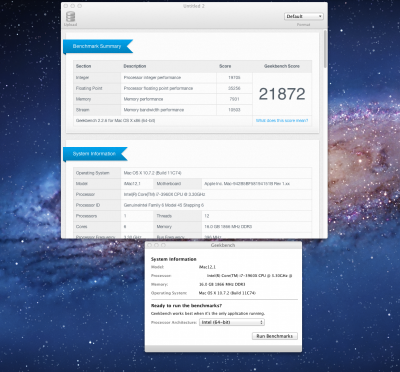- Joined
- May 14, 2011
- Messages
- 3
- Motherboard
- ASUS P9X79 PRO
- CPU
- Intel I7-3930k
- Graphics
- ZOTAC Geforce GTX 680
- Mac
- Classic Mac
- Mobile Phone
dashbad said:I was stable - ran prime95 in windows for 2 hours and had it running at 4.2 in OSX under general use for almost 24 hours. Rebooted one time and the BIOS reported failure to overclock and it was downhill from there.
I'm using the P9X79 Pro board with G.Skillz Ripjawz 16GB RAM in a 4x4 config.
Also bizarrely just now OSX is refusing to mount a DVD that mounts just fine in Windows....
I've noticed that my asus p9x79 pro also randomly sometimes does the 'failed to overclock' and resets the clock to something lower.. just wondering do you have tpu on or off ?
I had mine in turbo mode last night and it hit 4.2 without me really having to do anything.. but then this morning had that same error and went back to 3.3.

